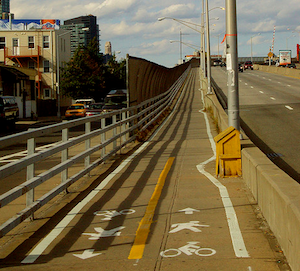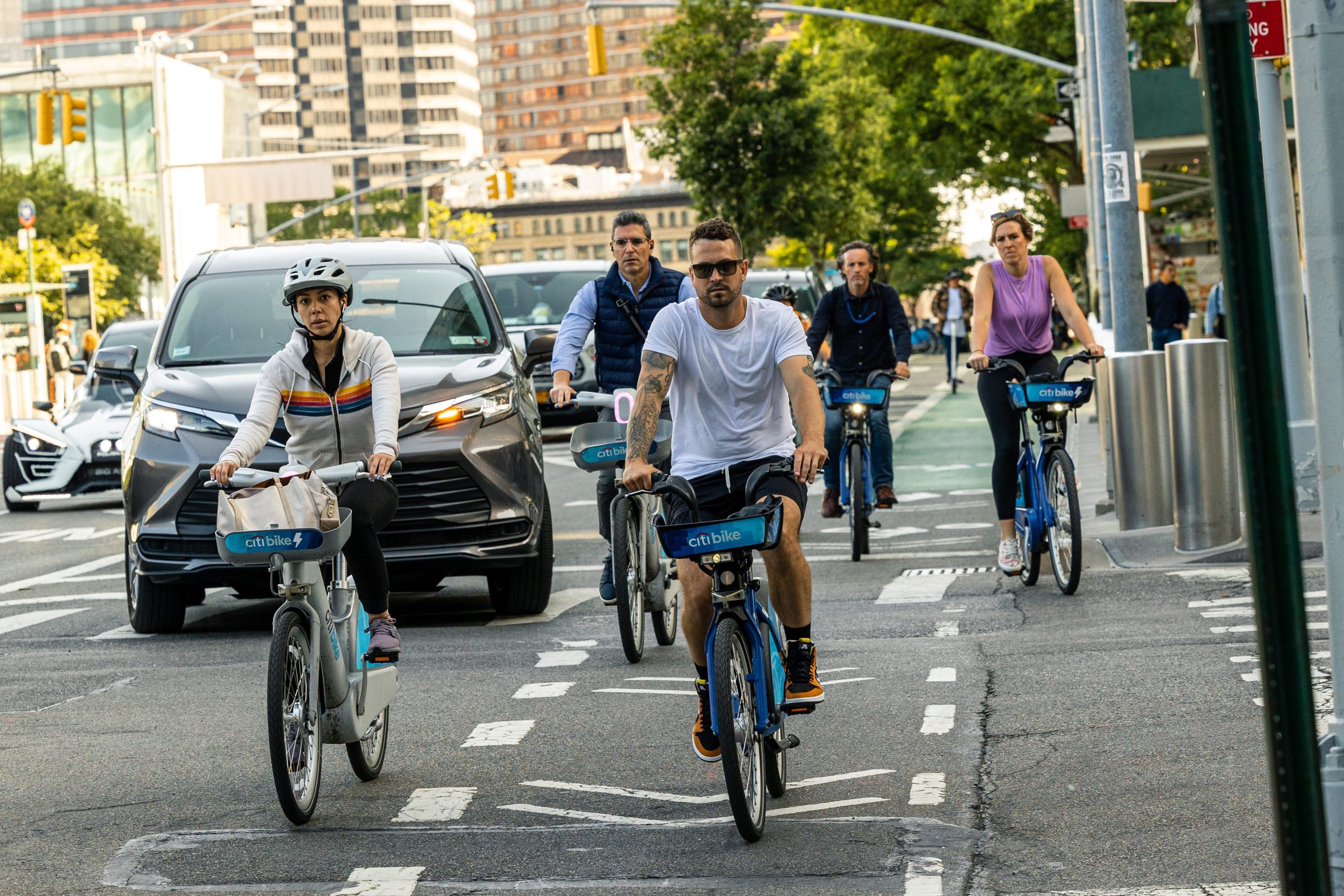The Pulaski Bridge, which connects Greenpoint and Long Island City across Newtown Creek, provides a narrow path for pedestrians and cyclists to share, next to six lanes of fast-moving motor vehicle traffic. As volumes have picked up on the path, minor tweaks made years ago may not be sufficient to provide space for interborough walkers and bike riders. It's a concern that's getting attention from elected officials.

Last Thursday, Assembly Member Joseph Lentol met with neighborhood residents, DOT and Transportation Alternatives to discuss the path's crowded conditions. Reports are mixed, Lentol's office said, as to whether conflicts between cyclists and pedestrians have become a problem on the bridge, where the eight-foot wide path falls two feet short of the minimum suggested by the American Association of State Highway and Transportation Officials.
A Lentol spokesperson said the meeting was called in an "attempt to generate ideas and hear points of view" on how the crossing could be improved.
This isn't the first time the bridge's narrow path has become an issue. In 2009, a group of residents and bridge users formed the Pulaski Bridge Coalition to address crowding on the path. That same year, DOT installed new signage and striping but did not increase the eight feet allotted to walkers and bike riders.
Converting one southbound motor vehicle lane to a two-way protected bike path is one possibility suggested by riders and walkers. While the bridge presently has three lanes in each direction for motor vehicle traffic, roads on both sides leading to the span do not: 11th Street and Jackson Avenue in Queens and McGuinness Boulevard in Brooklyn all have two lanes in each direction.
"Separating out a bike lane would make a lot of sense," said Lacey Tauber, secretary of Neighbors Allied for Good Growth. "It would make the pedestrians feel a lot safer. It would probably slow traffic," she said. "There are so many drivers who speed over the Pulaski and keep speeding on McGuinness."
Two-thirds of motorists on McGuinness Boulevard are speeding, including one in three truck drivers, according to a report released in March by a coalition that includes TA and NAG. The report led to a speeding crackdown by the 94th Precinct but the roadway is still lacking long-term design and enforcement fixes.
"There is a growing number of New Yorkers who are choosing bike and foot to travel between Queens and Brooklyn and they simply need more dedicated space," TA said in a statement. "Widening the existing pathway or giving space on the street to bicyclists will keep everyone out of each others' way and out of harm's way."
The bridge, which opened in 1954, had its last opportunity for major changes when it received a $40 million reconstruction in 1994. A similar project is not likely to happen for decades. DOT has not yet responded to repeated requests for comment on the possibility of installing a two-way bike lane on the bridge.
In the meantime, the Brooklyn Greenway Initiative is advocating for a new bridge west of the Pulaski, open only to cyclists and pedestrians, to connect Vernon Boulevard and Manhattan Avenue. The new crossing came up in discussions about the Pulaski Bridge path three years ago, said Milton Puryear, the group's director of planning. While an engineering study for the new bridge did not receive funding from the city's $10 million Newtown Creek Wastewater Treatment Plant fine, there may be another opportunity with funds from a $25 million settlement with ExxonMobil for a massive oil spill beneath Greenpoint.
Before an engineering study is funded, however, path usage will continue to grow, especially as more bike lanes are installed in Queens connecting to the bridge.
"We'd support anyone's efforts to come up with something more immediate," said Puryear. "Trying to do something in the short run is always good."





